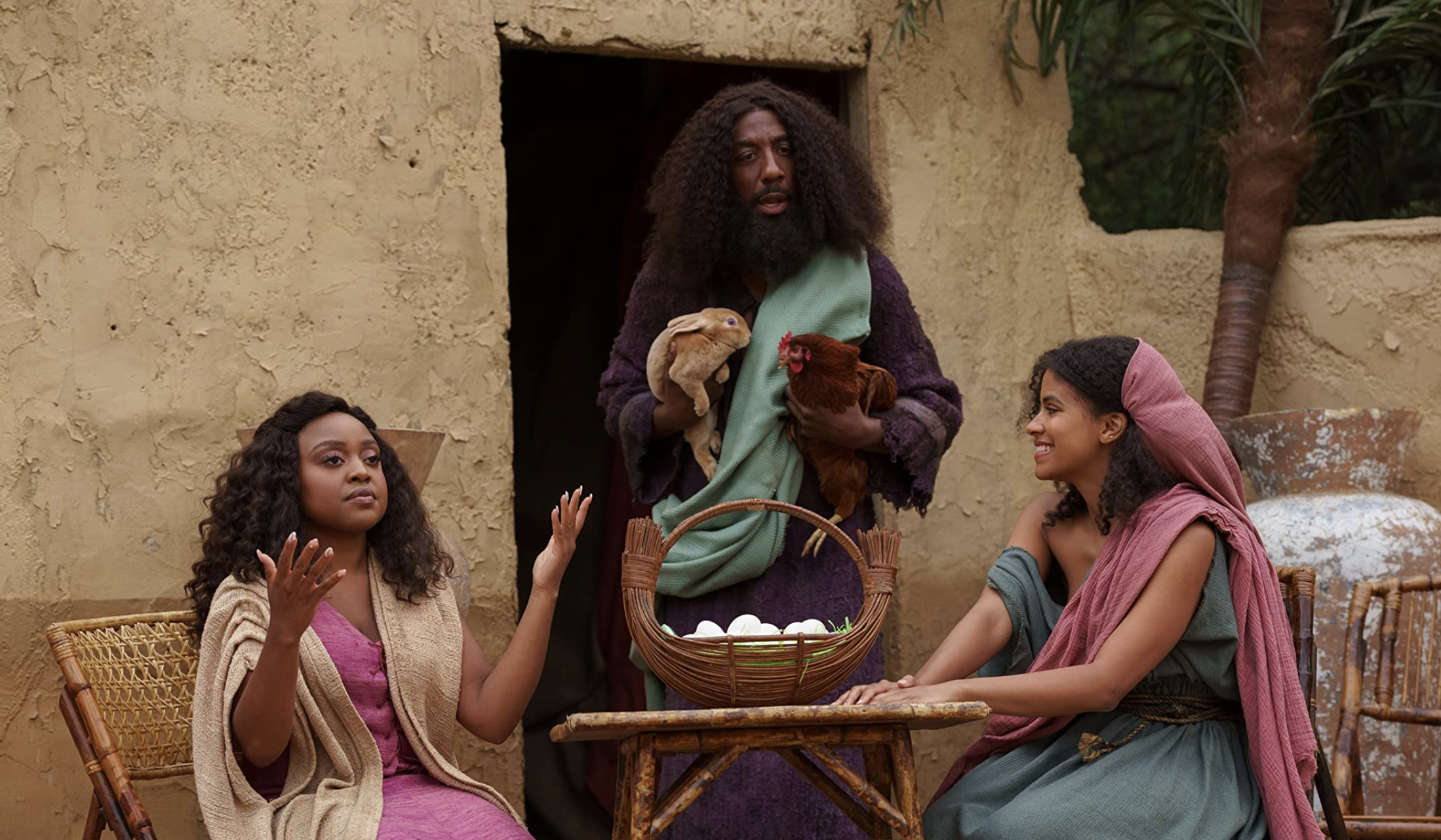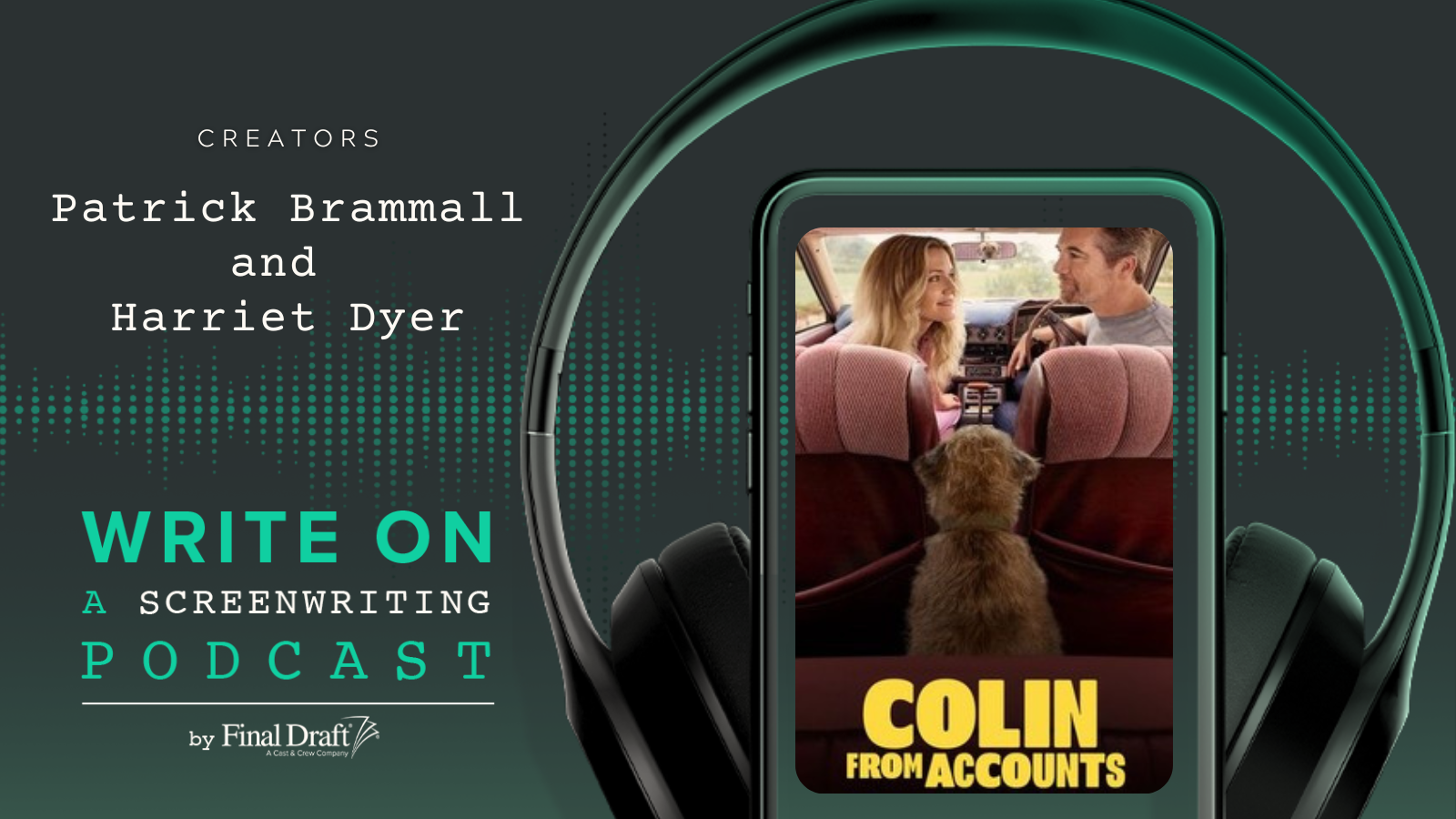How ‘Colin From Accounts’ Writers Craft a Hilarious TV Pilot
June 12, 2024
A dog. A nipple. A piece of human poop. This may not sound like a recipe for a great romantic sitcom, but with sizzling natural chemistry between the two leads, Colin From Accounts may be the funniest streaming show.
Part farce, part romance, part “messy women” trope, the show is helmed by the real-life married couple Australians Patrick Brammall and Harriet Dyer. With a score of 100% on Rotten Tomatoes, I sat down with Brammall and Dyer to find out how they made their original pilot fantastically funny and heartwarming.
Set in suburban Sydney, med-school student Ashley (Dyer) catches the eye of microbrewer Gordon (Brammall) as he’s driving in his car. He waits at a stop sign as she waits to cross the street on foot when both wave each other to go. He lets her cross the street and in an impulsive moment that’s both flirty and cheeky, she flashes him as a sort of thank you.
Distracted by the unexpected sight of a breast, he accidentally hits a dog that’s in the middle of the street. When neither Ashley nor Gordon has the heart to put down the dog, they decide to pay for the costly surgery to save the dog’s life. This doesn’t automatically unite the dog-crossed lovers. Instead, it allows for a lot of awkward interactions that tease a will-they or won’t-they dynamic.
Dyer and Brammall met in Sydney, "Around the traps," says Brammall, an Aussie term for Sydney’s theater scene owing to the trap doors found in theaters. Now married with a kid and living in Los Angeles, the couple write, edit, and act in the show without the benefit of a writers' room or even an assistant. They do practically everything but direct. Though Brammall had written screenplays and stage plays before tackling Colin From Accounts, this is Dyer’s first professional writing venture.
I asked them to help me break down the pilot episode in terms of hooking the audience and creating a fresh meet-cute.
Read More: Why You Should Write Dark Comedy
Hooking the Audience From the Get-Go
When writing a TV pilot, it’s important to grab the audience’s attention as soon as possible to let them know they’re watching something special and motivate them to stay tuned. But Dyer wasn’t thinking about the audience when crafting the pilot; she was only writing from her character’s point of view.
“It wasn't so much that we wanted to write something that would grab everyone's attention, more that it would grab the other characters’ attention. I think the way I was going about it was, ‘Well, if she flashes her nipple at him, and he hits a dog, then they have something to deal with between them.' That is a big hook for each of them, and then in turn, something that would obviously grab the audience,” she says.
Brammall agrees, saying, “I think the way we looked at it was, ‘What was the most kind of intense little moment between two people?’ In turn that makes a hook for the audience. We began with the concept of a Venn diagram, incorporating various elements we felt were essential at that moment.”
If you think of a Venn diagram with two overlapping circles, one circle is the chemistry between two strangers, another circle is the shared responsibility of caring for an injured dog, the overlapping part becomes the clear setup for the show.
Read More: TV Pilot Writing: Developing Your World of Characters

Chemistry Between the Leads
Writing romantic chemistry on the page can be challenging. So much believable attraction happens (or doesn’t) when the two actors get in the room together. But there are ways to plant the seeds in the writing and allow them space to grow.
“If she's willing to flash a nipple to him,” says Dyer, “it just shows the built-in chemistry that [Ashley and Gordon] have for each other. But that also needs to grow, and be paid off.”
While "love at first sight"—in this case, "nipple at first sight"—does happen in real life, it’s not enough to build an actual relationship. The writers need to create a way to sustain that chemistry, and let it develop. That’s where the dog comes in, since both feel culpable for the dog’s injuries. Throw in one more complication: Ashley gets kicked out of her apartment for bringing the dog home. Now she and the dog have to stay with Gordon, at least for a couple of days, but that’s time enough for their chemistry to intensify.

Limit the Exposition
A TV pilot should have no extraneous scenes. One event should lead to the next and the next and beats shouldn’t repeat. Dyer says this was one of the challenges she faced when first drafting the pilot.
“Initially, in the first few drafts, there were a few scenes that encapsulated what we saw in that first minute. We actually saw Ashley on the phone with her ex-boyfriend's mom, having a conversation, and we saw Gordon in a café having an awkward encounter with a woman who claimed that they'd been together and he'd forgotten her entirely. And we also saw the dog thing,” she says. But together, the writers decided it would be better to just cut to the chase.
"We realized that we only have to tell people something once, especially in that opening act. If we give them just a little bit about these people, we can let the audience play catch up with it," she says.
“The trick with pilots,” says Brammall, “is they're hard to do because you've got to set up so much information but you've got to do it in such a way that doesn't feel like exposition. Ideally the form and the content meet and that's what happened in our pilot.”
Dyer says it was Brammall’s idea to cut the early scenes that felt repetitive in the pilot and she was mortified at first. She quickly learned that being a good writer means being flexible.
"Those were the first scenes of the first thing I'd ever written since high school, and for Patty to say, ‘Listen, I think we can do this with a bit of a montage and maybe just a text to the ex,’ it took me a minute. So you have to be prepared to kill your darlings, both in the script and much later in the editing process,” she says.
“You've always got to be in service of the show,” adds Brammall.

Ground Your Characters to Make the Awkward Humor Work
Colin From Accounts has its fair share of toilet and body humor. From poop and pee to seeing the inside of Gordon’s penis through a medical scope, this kind of crass humor works in the show because of two things. The first is how grounded the characters are in reality. The second reason is the deep shame that the characters feel about their bodily functions.
“You cringe with them, you know?” says Dyer, adding, “You are feeling connected to them, you're feeling sorry for them and I think it's just deeply human to have these mistakes. So if they feel real and grounded, then I think you can get away with it.”
Brammall says it’s about creating context. “The context is that we don't show nipples and dicks when we don't know each other very well. So to make that context real, you've got to make the characters earthed, and then it's all connected.”
But that doesn’t mean Dyer was confident how the nipple flash would go over.
“Look, I was really nervous—nervous that it would be too crass and would turn the TV off and they wouldn't see that there was some smarts behind it. But we really wanted to put silly on a pedestal, since silly doesn't get a good run nowadays and neither does physical comedy," Dyer says.
"It's hard to get right but Patty and I both come from the theater. We love working in a wide shot and doing a big kind of physical performance. But if it was rooted in something believable, then we thought we could get away with it," she adds.
“Come for the nipple and stay for the heart,” says Brammall with a laugh.
You can stream all eight episodes of season one of Colin From Accounts on Paramount+. Season two has been shot and will be streaming soon. The writers hope to move forward with season three but are waiting to get the green light.
Read More: The Secret To Writing Good Jokes in a Script
Written by: Shanee Edwards
Shanee Edwards is an L.A.-based screenwriter, journalist and novelist who recently won The Next MacGyver television writing competition to create a TV show about a female engineer and was honored to be mentored by actress/producers America Ferrera. Shanee's first novel, Ada Lovelace: The Countess Who Dreamed in Numbers was published by Conrad Press in 2019. Currently, she is working on a biopic of controversial nurse Florence Nightingale. Shanee’s ultimate goal is to tell stories about strong, spirited women whose passion, humor and courage inspire us all.



